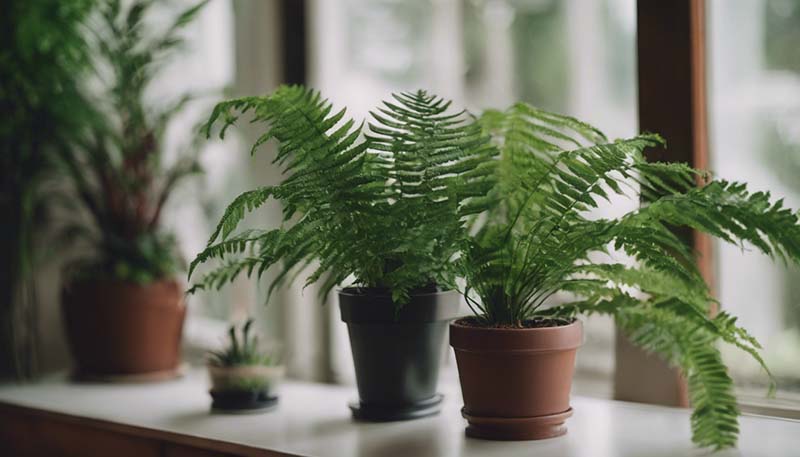Caring for Indoor Ferns: Tips and Tricks
Introduction
Ferns are ancient plants that have been around for over 200 million years. They are known for their lush, green foliage and air-purifying qualities, making them a popular choice for indoor gardening. However, caring for indoor ferns can be a bit challenging, especially for beginners. This article provides a comprehensive guide to help you understand the needs of your ferns and keep them thriving indoors.
Understanding Ferns
Types of Indoor Ferns
There are many species of ferns suitable for indoor cultivation, including:
- Boston Fern (Nephrolepis exaltata): Known for its drooping fronds, it's a classic choice for hanging baskets.
- Staghorn Fern (Platycerium spp.): With its unique antler-like fronds, it can be mounted on walls or displayed on shelves.
- Maidenhair Fern (Adiantum spp.): Delicate and small, it's perfect for small spaces or as a tabletop plant.
- Bird's Nest Fern (Asplenium nidus): Characterized by its large, kidney-shaped fronds, it adds a tropical feel to any room.
Light Requirements
Ferns generally prefer indirect light, as direct sunlight can scorch their leaves. However, different fern species have varying light preferences:
Advertisement
- Boston Ferns can tolerate a range of light conditions, from low to bright indirect light.
- Staghorn Ferns need bright, indirect light but can adapt to lower light conditions.
- Maidenhair Ferns thrive in medium to bright indirect light.
- Bird's Nest Ferns prefer low to medium light and can tolerate dimly lit areas.
Caring for Your Ferns
Watering
Ferns love moisture. However, overwatering can lead to root rot. Here are some tips for watering your ferns:
- Check the soil moisture regularly. Water when the top inch of soil feels dry.
- Use a well-draining potting mix to prevent water from sitting at the bottom of the pot.
- Mist your fern regularly to increase humidity, especially in dry seasons or climates.
Humidity
Ferns are humidity lovers. To maintain adequate humidity:
- Place a tray filled with water and pebbles under the pot to create a humid microclimate.
- Group your ferns with other moisture-loving plants to create a collective humidity effect.
- Use a humidifier, especially during the winter when indoor air tends to be drier.
Temperature
Most ferns prefer temperatures between 60-75°F (15-24°C). Keep them away from drafts, air conditioning vents, and heaters.
Fertilizing
Ferns don't need heavy fertilization. Feed them with a balanced, water-soluble fertilizer every 4-6 weeks during the growing season (spring and summer):
- Use a quarter of the recommended strength to prevent burning the roots.
- Avoid using fertilizers high in salts, which can harm ferns.
Pruning and Cleaning
Regular maintenance is key to keeping your ferns looking their best:

- Remove any dead or yellowing fronds to encourage new growth.
- Gently wipe the leaves with a damp cloth to remove dust and improve photosynthesis.
Common Problems and Solutions
Yellowing Fronds
This can be a sign of too much light, overwatering, or a lack of nutrients. Adjust the light, water, and feeding accordingly.
Brown Leaf Tips
Often caused by low humidity or water with high mineral content. Increase humidity and use filtered or distilled water.
Leggy Growth
If your fern is stretching towards the light, it may need more light or a higher pot to accommodate its growth.
Conclusion
Caring for indoor ferns can be rewarding and therapeutic. With the right care, you can enjoy their beauty and the air-purifying benefits they provide. Remember to observe your ferns closely, as they will tell you what they need through their appearance and growth habits. Happy fern nurturing!
Comment